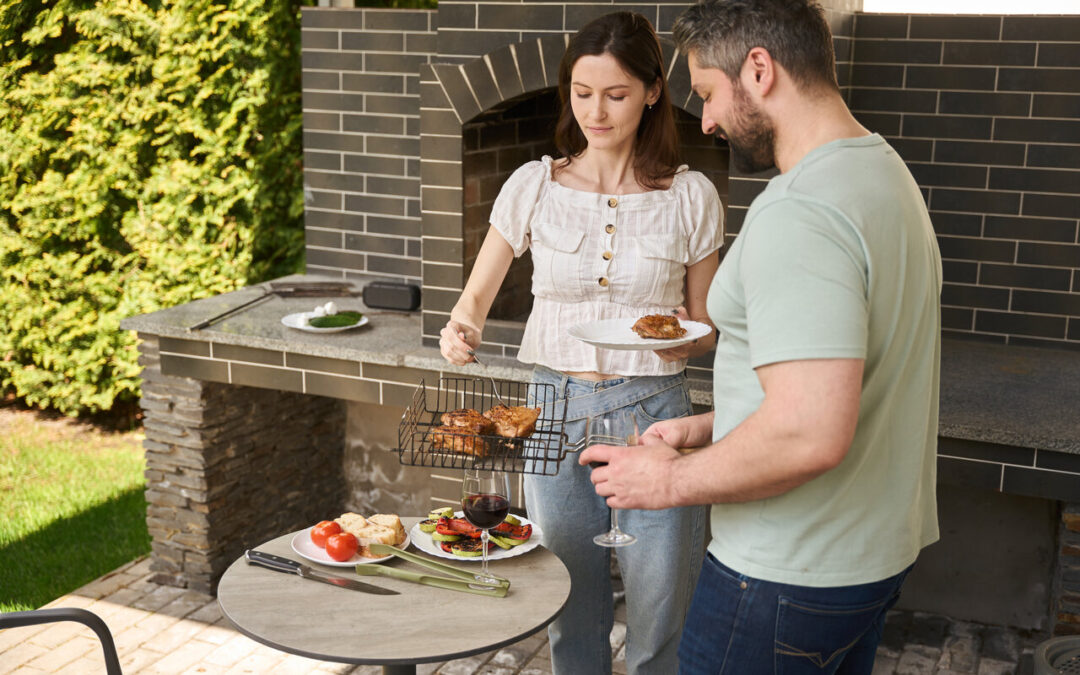
In today’s fast-paced world, couples face the modern relationship paradox: the desire for both independence and closeness. This comprehensive guide explores psychological theories, real-life examples, practical strategies, and actionable advice to maintain individuality while fostering emotional intimacy. Learn how to navigate the balance, avoid common pitfalls, and strengthen your connection.
Understanding the Modern Relationship Paradox
In modern relationships, the tension between independence and togetherness is increasingly common. On one hand, individuality, personal growth, and autonomy are highly valued. On the other, emotional intimacy, bonding, and shared life goals are essential for a thriving partnership. When unbalanced, this tension can lead to resentment, emotional distance, or loss of identity.
This article will explore:
- The psychology behind autonomy and connection
- How this paradox manifests in real life
- Signs of imbalance in relationships
- Practical strategies to achieve balance
Theoretical Foundations: Why Independence and Togetherness Compete
Relational Dialectics: The Tension Is Normal
Relational dialectics theory explains that in any close relationship, contradictory needs—such as autonomy versus connection—coexist and require negotiation. This shows that the modern relationship paradox is natural, not a flaw. Success depends on navigating these tensions thoughtfully.
Self-Differentiation & Bowen Theory
Murray Bowen’s theory of self-differentiation emphasizes maintaining personal identity while staying emotionally connected. Highly differentiated individuals can balance closeness with autonomy, avoiding both enmeshment (overfusion) and emotional cutoff.
Autonomy × Relatedness: Needs Interaction
A 2019 study published in PMC highlights that fulfilling autonomy and relatedness needs strengthens relationships. Independence does not oppose intimacy; when respected mutually, both partners grow closer.
Self-Expansion Model
The self-expansion model suggests relationships provide opportunities to grow by absorbing new perspectives, skills, and experiences from a partner.Maintaining individuality ensures continued novelty and vitality in the relationship.

How the Paradox Appears in Real Life
Story A: The “Merged Lives” Couple
Julia and Marcus married young, merging hobbies, routines, and social circles. Initially, this felt perfect, but over time Julia lost her identity and felt suffocated. Emotional distance grew despite physical closeness.
Lesson: Excessive togetherness can stifle personal growth and breed resentment.
Story B: The “Detached Partners”
Sasha and Nolan are career-driven and value independence. They rarely schedule shared activities. Emotional intimacy is minimal, and the relationship feels transactional.
Lesson: Excessive independence can result in loneliness and lack of emotional connection.
Story C: The Rhythmic Honeymoon
Tara and Amir alternate phases: one month focused on personal pursuits, the next on shared activities. This rhythm preserves both individuality and intimacy.
Lesson: Structured ebb and flow can create balance without tension.
Signs Your Relationship Is Out of Balance
Overfusion (Too Much Togetherness)
- Anxiety or discomfort when apart
- Declining invitations unless partner joins
- Giving up hobbies or personal goals
- Over-consulting partner on decisions
- Resentment or loss of identity
Disconnection (Too Much Independence)
- Avoiding check-ins or emotional closeness
- Rarely sharing feelings
- Viewing compromise as a threat
- Partner feels left out or ignored
- Emotional or physical distance
Tip: Notice which direction you drift under stress—it reveals your balancing tendency.
What True Balance Looks Like
- Respect for personal space while maintaining emotional connection
- Pursuit of individual goals alongside shared goals
- Clear and flexible boundaries
- Open, nonjudgmental communication
- Emotional intimacy coexisting with autonomy
Dr. John Gottman recommends five hours per week of quality time to maintain connection.Meanwhile, solo time recharges partners and brings fresh energy.

12 Actionable Strategies to Achieve Balanced Independence & Togetherness
- Regular “State of the Union” Check-ins
- Weekly or biweekly discussions about closeness and distance.
- Define Personal & Couple Boundaries
- Solo hobbies, tech-free windows, or quiet personal time.
- Schedule Shared Rituals
- Date nights, walks, or joint weekend activities.
- Encourage & Respect Solo Hobbies
- Celebrate each other’s independent achievements.
- Transparent Communication of Needs
- “I feel … when …” statements clarify desires.
- Alternate Focus
- Lean into togetherness or independence depending on life circumstances.
- Cultivate Emotional Self-Regulation
- Pause before reacting to tension; practice self-reflection.
- Maintain Friendships & Other Relationships
- Reduces pressure on the partner to fulfill all needs.
- Define Shared Goals & Projects
- Collaborative goals give purpose, while solo goals maintain growth.
- Use Micro-Checkpoints During the Day
- Quick messages or coffee breaks maintain connection without intrusion.
- Be Curious, Not Reactive
- Ask gently about space or support needs instead of assuming.
- Therapy or Coaching Support
- Couples therapy can untangle deeper patterns and build communication skills.
How Do You Balance Independence and Interdependence?
Balancing independence and interdependence strengthens relationships by allowing personal growth and shared life experiences.
Strategies for Balancing
- Set Clear Boundaries – Allocate solo vs shared time.
- Communicate Needs Openly – Use “I feel … when …” statements.
- Plan Shared Goals – Finances, home life, travel, or mutual projects.
- Celebrate Individual Achievements – Support personal growth.
- Create Rhythms – Rotate between togetherness and autonomy.
- Practice Emotional Self-Regulation – Respond with curiosity rather than defensiveness.
Example: Emma paints weekly while Lucas runs independently. Shared evenings are reserved for cooking and discussing their week. Independence fuels creativity; interdependence strengthens connection.
Takeaway: Independence and interdependence are complementary. Communication, boundaries, and intentional planning are key.
Common Pitfalls, Myths & Misconceptions
- Myth: Spending all time together shows love. Reality: Love thrives with space.
- Pitfall: Seeing a partner’s need for space as rejection. Reality: It’s a healthy need.
- Misconception: Autonomy = emotional detachment. Reality: Healthy independence coexists with connection.
- Pitfall: Rigid “balance quotas.” Reality: Flexibility is essential.
- Myth: Only therapy can fix imbalance. Reality: Awareness, strategies, and communication often suffice; therapy supports growth.
Frequently Asked Questions (FAQs)
1. How do you balance being an individual while in a relationship?
Maintain your personal goals, hobbies, and friendships while committing to shared life goals. Communication and boundaries are essential.
2. Is it healthy for partners to spend time apart?
Yes. Independence fosters growth, renewal, and deeper connection.
3. What happens when there is too much togetherness?
Excessive closeness can cause enmeshment, resentment, and loss of identity.
4. Can too much independence ruin a relationship?
Yes. Excessive independence can lead to emotional detachment and loneliness.
5. How often should couples spend quality time together?
At least five hours per week beyond routine tasks.
6. What are good boundaries to maintain autonomy?
Examples: solo hobbies, tech-free time, personal nights, and financial independence.
7. How do you negotiate different needs for closeness?
Experiment with compromise, pilot periods, and empathetic communication.
8. How to rebuild togetherness after distance?
Reintroduce shared rituals, check-ins, and honest emotional sharing.
9. Does cohabitation complicate balance?
Yes. Boundaries and solo spaces become critical when living together.
10. Can therapy help with independence-togetherness struggles?
Yes. Therapy can address patterns, mediate conflict, and teach communication strategies.
11. How does this apply to long-distance relationships?
Intentional closeness and trust in autonomy are key for thriving long-distance relationships.
12. Is this only about romantic relationships?
No. The autonomy-connection tension exists in friendships, family, and workplace relationships.
Final Takeaways
- Independence and togetherness are not contradictory; they complement each other.
- Healthy relationships thrive when partners maintain individuality while nurturing shared goals.
- Communication, boundaries, and intentional strategies ensure sustainable balance.
- Small habits, like micro check-ins, reinforce interdependence without compromising autonomy.
By applying these strategies, couples can transform the paradox of independence and togetherness into a dance of mutual growth, respect, and intimacy.
